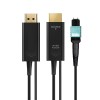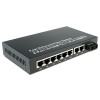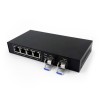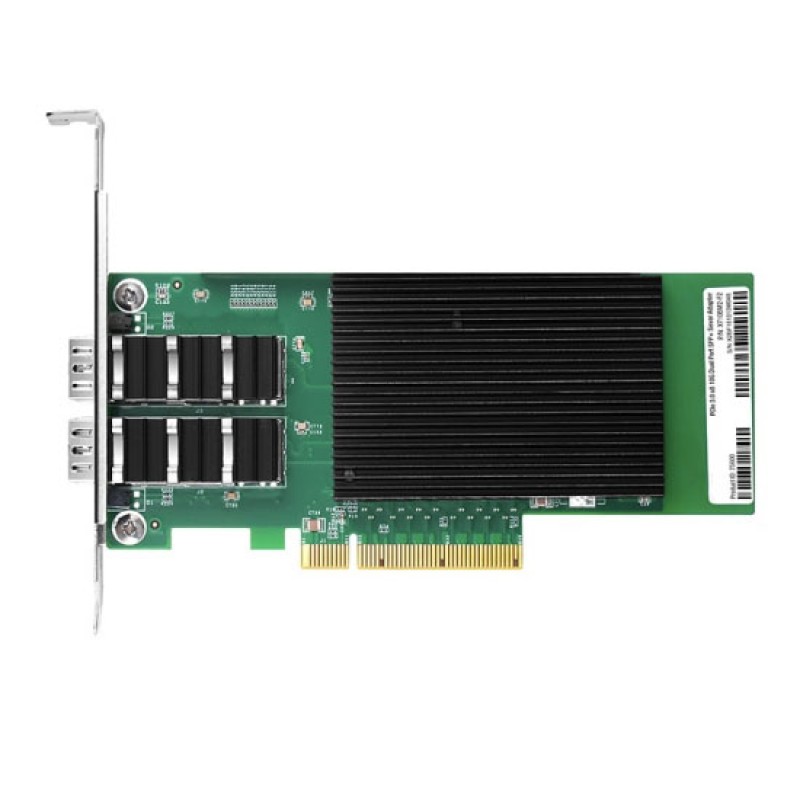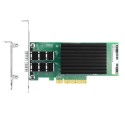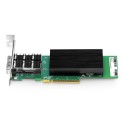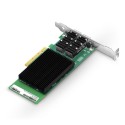10 Gigabit Dual Port SFP+ Intel X710BM2-BASED Low
Latency Ethernet Network Interface Card
This dual-port 10Gb network interface card (NIC) is
optimized on Intel X710-BM2 controller for server connectivity and network
virtualization. By supporting a PCIe 3.0 x8 host interface, this adapter
provides sufficient bandwidth for line rate traffic on dual 10Gb ports.
Improved support for virtualization, including VMDq and
SR-IOV, makes the NIC a perfect fit for virtualized environments. It is
designed to provide broad interoperability, critical performance optimizations,
and increased agility for communications, cloud, and enterprise IT network
solutions.
Product Highlights
- PCIe 3.0 x 8 Host Interface and 10GbE Dual-Port
Transmission
- Advanced Traffic Steering increases TPS and reduces
latency for cloud applications
- Dynamic Device Personalization (DDP) Increases Packet
Processing Efficiency
- Data Plane Development Kit (DPDK) Optimized for
Efficient Packet Processing
- I/O Virtualization Innovations, Support VMDq,
PCI-SIG&SR-IOV Implementation
- Unified Networking Delivering LAN, iSCSI, NFS and FCoE in One Low Cost CNA
- Support Network Virtualization Offloads Including
Geneve, VXLAN and NVGRE
Specifications
* PCIe 3.0 is backward compatible with PCIe 2.0 and it
carries a bit rate of 8 giga transfers per second (GT/s) per lane.
Controller | Intel X710-BM2 | Intel XL710-BM2 | Intel XXV710-AM2 | Intel X550-AT2 | Intel XL710-BM1 | Intel 82599ES |
Supported Ethernet Speeds | 10/1GbE | 40/10/1GbE | 25/10/1GbE | 10/1GBase-T/100M | 10/1GbE | 10/1GbE |
Ports | Dual-Port | Dual-Port | Dual-Port | Dual-Port | Quad-Port | Dual-Port |
Systems Interface Type | PCIe 3.0 x8 (8.0 GT/s) | PCIe 3.0 x8 (8.0 GT/s) | PCIe 3.0 x8 (8.0 GT/s) | PCIe 3.0 x4 (8.0 GT/s) | PCIe 3.0 x8 (8.0 GT/s) | PCIe 2.0 x8 (5.0 GT/s) |
On-chip QoS and Traffic Management |  |  |  |  |  |  |
SR-IOV |  |  |  |  |  |  |
Fiber Channel over Ethernet | — | — | — |  | — |  |
Intelligent Offloads |  |  |  |  |  |  |
MSI-X |  |  |  |  |  |  |
VMDq |  |  |  |  |  |  |
ISCSI Acceleration |  |  |  |  |  |  |
Network Virtualization Offload of VXLAN, GENEVE and NVGRE Overlay Networks |  |  |  |  |  |  |

